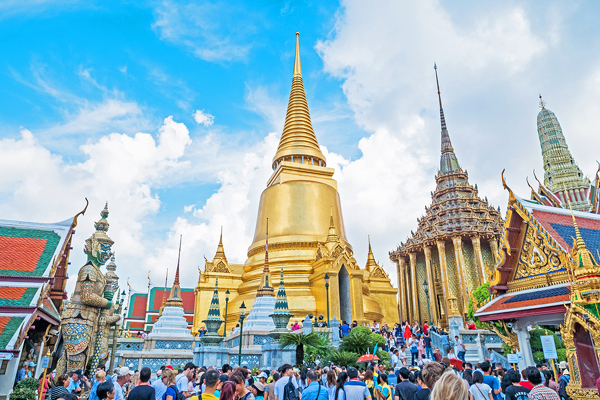Asian cities had outnumbered their counterparts in Europe and America in terms of international tourist arrivals in 2017, according to GlobalData, a leading data and analytics company.
Asia was represented by seven cities—Bangkok, Singapore, Tokyo, Hong Kong, Seoul, Kuala Lumpur and Shenzhen—while Europe, Middle East and America were limited to one city each—with London, Dubai and New York City respectively, eturbonews reported.
Depreciation of most of the Asian currencies (except Chinese Yuan) played a vital role in attracting international visitors to Asian cities. Tourists from Europe and China were behind the growth of international arrivals to Asia.
Bangkok continues to remain the top international tourist destination globally for the third consecutive year, with 20.8 million international visitors in 2017. Tourism-friendly visa policies of Thailand, strong promotional efforts and low-cost connectivity drove Bangkok to the top spot.
London was the second most preferred destination with 20.4 million international visitors riding on the back of deprecation in the value of British Pound since Brexit referendum, followed by Singapore, Dubai and Hong Kong with 17.42 million, 15.8 million and 14.03 million, respectively.
Driving Forces
Konstantina Boutsioukou, Travel and Tourism Analyst says, "Huge expanding middle class, the growth of low-cost carriers and geographical proximity makes traveling within Asia easy and convenient, particularly for the first time travelers."
Boutsioukou adds, "Such figures point out that even more affluent consumers have to save for a holiday, meaning that they cannot travel at the drop of a hat and still view international travel as part of an aspirational lifestyle."
However, despite lower hotel cost, the occupancy rate in most of the Asian cities was around 70%, lower than cities in Europe and America in 2017.
This is because the growth in hotel development in recent years is substantially higher than the growth in the number of travelers; hence, a considerable number of rooms remain unoccupied. Exception is seen in Tokyo, Singapore and Seoul, where business purpose tourists helped maintain occupancy rate at more than 80%. In terms of average daily rate (ADR), New York City leads the pack followed by London.
Travel and tourism sector contribution to Asian cities' economy and employment has witnessed significant growth during the last decade. For instance, Bangkok tourism sector's contribution to its total GDP increased from 8.2% in 2006 to 10.14% in 2017, according to World Travel & Tourism Council. Similarly, Dubai tourism sector contributed 9.52% to the total GDP and accounted for 10.94% in total employment in 2017.


